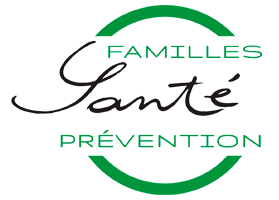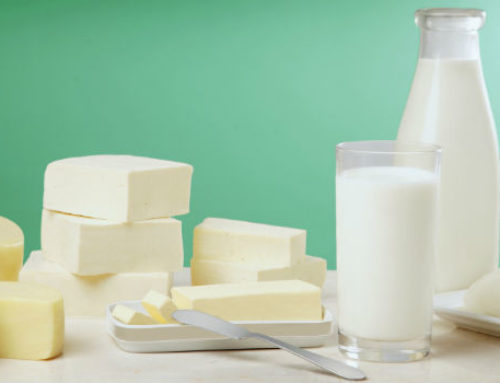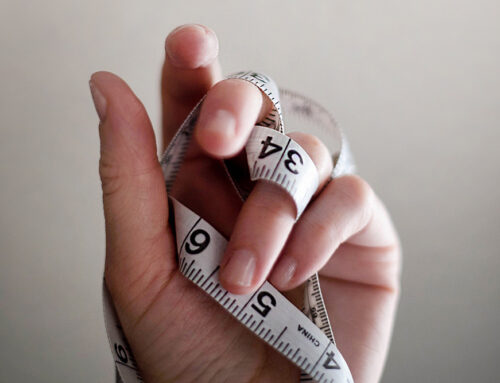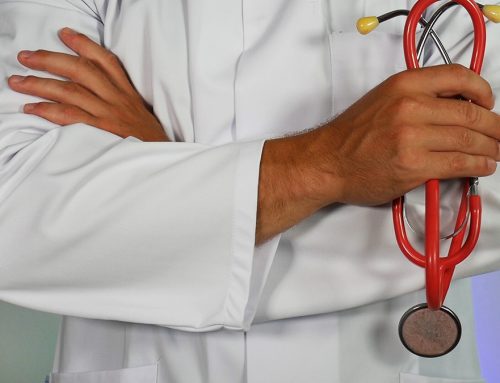3 letters (this one and the two next ones) could help you to reach that goal; save you from diets, hospital trips, useless medical appointments, and perhaps even from an operation… In any case, it could save you from some spiteful glares.
In the this letter, you will understand where your excess weight comes from, what you can blame in your nutrition and your environment, and what the consequences are to your health.
In the second letter, I will tell you what foods are “obesogenic” and what natural appetite regulators you can find in your foods.
In the third, I will explain how to get rid of excess weight for good and end obesity.
UNDERSTANDING THE REASONS FOR EXCESS WEIGHT AND OBESITY and WHAT THE CONSEQUENCES ARE
This is proof that your will alone isn’t enough
This statement is all the easier to understand since nobody explained to you what obesity is, how it happens, or how the vicious circle continues, nor how you, peacefully and without stress, can break the circle and reach your dream of losing the weight that is poisoning your life.
There are many gurus working the field of obesity and excess weight, and you will see more spring up as spring and summer approach. They play with the fact that at the beach, the opinion of others on one’s body somehow becomes more important than our own.
Let’s not talk about all the different diets out there on the internet, TV, the ones sold by so-called medical experts – each more tempting than the other. Many of them are sponsored by one more useless products. All they will do is thin your wallet rather than your waistline.
No doubt, these fads will soon try to convince you to get a “bariatric” surgery, an intervention on your stomach or your intestine meant to help you lose weight. They will try to sell you on some miracle pills, developed after some chemical manipulation (1) to regulate your appetite and your sensation of satiety after a meal. They could even make you believe in a specific, unique vaccine that could spare you all diseases in the world.
By following the information displayed in these 3 letters, it won’t be that difficult to lose some excess weight, because then you will be armed with the information to understand:
Why so much weight disturbs you and makes you sick;
What all this excess weight is made of;
How you can, alone or with assistance, lose the problematic weight. You might enroll the support of a good naturopathic physician or a good micro-nutritionist, equipped with both knowledge and common sense.
I cannot recommend hospital dieticians, since lobbies of the food industry have formated them and infiltrated hospitals with their pseudo-healthy products. These products’ labels display endless lists of tempting health virtues, which are at least half false. The sad thing is that these may still be covered by your insurance while other useful medications aren’t.
Neither can I recommend the French National Plan in Health Prevention (Plan National de Nutrition Santé or PNNS), which is also manipulated and backed up by so-called experts, who do not always disclose their financial ties. This plan is indirectly financed by the food industry, which is not surprising since the French government has been over-indebted and bankrupt for decades.
Skyrocketing costs that suit many people’s agenda
“When aliens invade us, they will eat fat people first.” It’s a silly joke. However, these letters are here to help you, along with all your acquaintances who may need it. In France, the costs of obesity amount to at least €20 billion a year; the same amount that is spent to fight alcohol and tobacco.
A third of the French are impacted. They are manipulated by the food industry and their TV and internet ads that make so many half-truth nutritional allegations. This population has doubled in the last 20 years.
When it comes to prevention campaigns, which are very costly and backed up by so-called health institutions, they only profit publicist agencies that earn their wealthy living on the back of the sick.
In financial terms, obesity represents in the world a cost of $147 billion, which includes the costs incurred by the pathologies caused by obesity, and everything we spend to get rid of it without much success.
Let us define and assess this world epidemy, which is affecting you
Everyone knows his ideal weight: the one of their 20s!
In kilos:
– For men, it is the number of centimeters above 1 meter of your height,
– For women, it is the same number of centimeters above 1 meter of your height, minus 5 to 10.
Hence a man of 1.80 m/5ft10in should weigh 80 kg/176 lbs, and a woman of 1.60 m/5ft 3in should weigh between 50kg/110lbs and 55 kg/121 lbs. Needless to say, the calculation is simpler in kilo/meters than in lbs/feet.
Obviously, specialists tried to define a number to assess the issue – it looks more professional – and invented the BMI (Body Mass Index), a math formula that accounts for your weight and your height. Be aware that this is more useful to your health professional than to you.
BMI = Weight (Kg)/ (Height(m))²
BMI is normal from 18 to 25
People are overweight if their BMI ranges from 25 and 30
Above 30, they qualify as obese
This calculation is only valid from 16 to 70-80 years of age.
Persons with a BMI below 18 live shorter lives than the ones whose BMI ranges between 25-27. Having light excess weight can be useful, hence do not panic.
Easier and more accessible, you can measure your waist line at belly button level with a basic measuring tape.
Ideally, a man’s waistline shouldn’t go above 100cm/39.4in
For men, fat usually builds up at the bottom of their belly, on shoulders, and in the pseudo breast glands.
For men, fat usually builds up at the bottom of their belly, on shoulders, and in the pseudo breast glands.
Androïd obesity is defined as having a waist line larger than 102 cm or 40.1 in.
Ideally, a woman’s waist line should be larger than 90 cm or 35.4 in.
In women, fat tends to concentrate under the belt line, on hips and bottom, and after menopause, in the mammal glands.
Gynoid obesity is defined by a waist line larger than 90 cm/35.4 in in women, with the exception of course of pregnancy.
In France, the Specialized Observatory Excess Weight and Obesity (Observatoire spécialisé surpoids et obésité) declared 10 years ago that 46.5% of the French population was overweight – with a BMI ranging between 25 and 29.9 – or obese with a BMI superior to 30. This means there was an increase of approximately 6% in 12 years.
Thus, excess weight and obesity have become a public health issue, in terms of disease, suffering and cost.
Your body fat represents approximately 15% to 25% of the total weight; closer to 15% if you are male, and around 25% if you are a female. The female body is made of more compositional body fat compared to muscle and bone mass, which proportion is less important in women than men.
Your fat tissue is vital: Let us differentiate “brown” from “white” fat tissue
Knowing about the fat constitution, the cells forming our fat tissue, and how they are formed and distributed, is indispensable in preventing excess weight and pathologies of what is called “adiposis”.
“Brown” fat, the most irrigated through blood flow, plays mostly an energy production role. It is a source of heat, which is vital to mammals that hibernate in the winter, such as marmots.
In the human fetus and the newborn, fat is concentrated mostly in the back, in between the shoulder blades, around the large vessels under the arms (armpits), the neck, kidneys, and heart. In the adult, fat persistence is real, it correlates with body fat, age, and outside temperature.
The generating stations for adipocytes, i.e. the “brown” cells, are mitochondria. They manufacture a hormone called thermogenin, which frees energy in the blood in order to oxidize the cells’ fatty acids and form multiple tiny drops of lipids.
Oxidized lipids are what give the cells their brown color. This way, the body will receive heat easily, through thermogenesis, without shivering. These cells are indeed very sensitive to the cold, and hence produce heat. Thermogenesis is induced by the cold. It is what keeps the body temperature at 37°C/98.6°F.
Conversely, too much heat could transform brown adipocytes into white adipocytes. Therefore, beware of not overheating your house or apartment, which only can contribute to maintaining your body fat. Winter is a good thing, and not only for nature! Putting too many layers on is not a good idea for your health.
Do not forget that cold is good for you. You are not meant to stay put, but to move your body. It’s the best way to warm up!
However, in terms of calories in humans, heat regulation is not as optimal when body fat is excessive.
Let’s remember that a gram of fat brings 9 calories to your body, while 1 gram of sugar brings 4 and a gram of alcohol, 7 calories.
“White fat” is a thermal insulant and mechanical protector, essentially located under the skin. It contributes to the thermal modelling of the body.
It is bad for you if it develops excessively, sometimes in an extreme manner, it is a source of obesity. Thus, it is the “white” fat tissue that is in surplus. It is the most important energy reserve of our body. It promotes positive immune activities, but in excess, it is also a source of inflammation. White fat is mostly “visceral fat,” located in or around critical organs (belly, liver, small intestine, kidneys, prostate), in the muscles, or mammary glands and blood vessels. It is the latter that tend to get blocked. White fat does not usually represent more than 20% of one’s body fat. However, once it exceeds 20% of total body fat, this so-called “visceral” fat becomes toxic. It triggers inflammation and makes us sick.
This white fat mass can reach 50% of the body fat in obese people. You will see and understand that abdominal obesity is one of the first causes of insulin resistance, and consequently, of diabetes.
White body fat is very sensitive to hormones: it is “hormone dependent”
Surplus fat builds up thanks to excess insulin manufactured by an excessive sugar consumption
Insulin is manufactured by the pancreas, which is stimulated by sugar consumption.
Insulin is designed to lower the level of sugar in the blood, by allocating the glucose to all cells needing energy: brain cells, muscle cells, and liver cells. Overstimulating one’s pancreas means tiring it out and making it insulin resistant. This is the primary cause of type II diabetes.
Therefore, “Lipogenesis” (a.k.a “Fat-generation”) is stimulated by insulin production – a hormone that is very sugar-intake dependent
Fat tissue formation stems from white adipocytes, which at their core possess a great cavity called “vacuole”, which can fill up with lipid drops.
The size of adipocytes can vary, up to 20 times. It stocks up small lipid drops in the shape of free fatty acids (FFAs). When they bind together, they form triglycerides (TG). Each is composed of 3 fatty acids.
Adipocytes are located in connective tissue (under the skin, and in and around the muscles and tendons), which gives it a certain degree of flexibility, in the bone marrow, and in the middle of the cells that manufacture blood cells (2). They can also be pooled to form white fat tissue at any location of the body.
White fat tissue is located superficially, thus it is very visible, diffuse, under the skin. In men, it is located mostly in the nape of the neck area, on shoulders, and on the belly. In women, in the breast, the hips and the bottom.
It is also present in the deeper regions of the body: it surrounds the vessels of the intestine, it is in the abdominal fat, at the level of the ‘fat apron’ or omentum (3) that normally plays an immunizing role in the entire abdominal cavity. Hence, we carry the omentum in the infected zones in order to protect them. It plays a policing role in the belly, in appendicitis, in inflammation-infections of the gallbladder (cholecystitis), or of the colon (sigmoiditis). However, when there is a presence of cancer cells in the belly, it plays the reverse role, and goes around spreading cancer cells in the whole abdominal cavity. This is called peritoneal carcinosis or cancer of the peritonium.
Fat also stocks up in the region located around and behind the kidneys. These energy reserves usually disappear or « melt » during a fast.
It is also present in the support zones, that are not too affected by fasting, where it acts as a protector: surrounding the palm, or the palmar surface of the fingers, and the sole of the toes.
Adipocyte cells fill up with fat (not used or burned elsewhere) and even more of food sugar that transforms into fat.
In order to understand it well, let us consider this simplistic yet useful explanation: “One gram of sugar represents 4 calories, and 2 grams, 8 calories. With one more calorie, the 2 grams of sugar transform into 1 gram of fats, which represents 9 calories.” The same mechanism applies to geese, ducks and humans. The transformation of large amounts of sugar to fat tires out animals as much as humans!
Remember that the mechanism by which glucose enters fat cells is the same as the one by which it enters members muscle cells and heart cells, cardiomyocytes.
In individuals with surplus fat tissue, there will be metabolic competition in the use of fatty acids versus the use of glucose.
The fatty acid concentration increases while the muscles use of glucose, stimulated by too much insulin, diminishes. And so does the muscle synthesis of glycogen, which is capable of stocking sugars as a reserve.
Glycogen is the human and animal reserve in sugar, like the starches in vegetables. These are polysaccharides. Humans usually stock glycogen in the liver and muscles for a week to 10 days. Obviously, a reserve is useful to perform, for example, a marathon!
Understand : a surplus of fat in the body is going to be damaging to your muscles – which you will first have to reactivate – before it damages your general health.
The two main lipogenesis sites (where fats are manufactured) are first, the liver (to make the liver fat, which will make you as fatigued as corn-maltose-force-fed geese), then fat tissue. Beyond that, excess fats can infiltrate all tissue of the body.
We now understand that white fat tissue keeps the quasi-totality of triglycerides stocked in the body. Hence it is one of the most important energy reserves in the body. We will see how to mobilize it and how not to reinforce it. This energy reserve will be used once carbohydrate reserves have been exhausted by fasting, prolonged physical activity, or by fighting cold. But these reserves can’t be used with individuals with diabetes, which main symptoms is insulin-resistance. Does it mean that diabetes will preclude you from losing weight?
The question that you want to ask is: “is insulin resistance definitive?” Too many young doctors think that it is, because they have been trained to believe so. Don’t hesitate to make them read this letter.
Fat can melt under the influence of hormones: adrenalin and noradrenalin .
Elles sont fabriquées au centre de chaque glande surrénale, les médullosurrénales, stimulées lors des efforts intenses que les montagnards connaissent bien quand il s’agit de ne pas se tromper de voie ou de prise solide de main ou de pied dans une cascade de glace ou sur une paroi verticale.
Ces mêmes hormones fonctionnent aussi comme neurotransmetteurs à la jonction des fibres nerveuses avec les muscles quand le système végétatif sympathique est stimulé, par exemple par le froid ou le stress.
Fat manufactures a hormone, leptin, which informs the brain that you have eaten enough:
This hormone communicates with the brain and informs it that you are full. It regulates appetite based on the volume of fat tissue, through a retro control located at the base of the brain, at the level of the hypothalamus. Hence leptin cuts hunger, inhibits the route that opens your appetite. Chewing efficiently will also trigger leptin.
We will see in our second letter that another hormone, the reverse to leptin called ghrelin that is manufactured in the stomach when it is no longer distended, which triggers a hunger sensation that will make you start eating.
Excess fat manufactures carcinogenic hormones, as much for the prostate as for the breasts.
Excess adipocytes manufacture angiogenic factors that favor their own vascularization and the formation of new vessels. They also manufacture prostaglandins that, in excess, are the inflammation molecules that prepare cancer.
Adipocytes also manufacture estrogen in women (which markedly increases breast cancer risks, or breast cancer recurrence risks), testosterone metabolites in men (which increase prostate cancer risks or recurrence risks), angiotensinogen that will spike up your blood pressure, and inflammation proteins that will act according to genetic sensitivities in different locations of the body.
Immunity role of fat tissue, from positive to negative
Fat cells, adipocytes in the normal individual, are equipped to develop immune activities, like white blood cells called “macrophages” (4).
We understand, for example, that adipocytes can colonize a hematoma (a.k.a bruise) or replace red blood cells that have been absorbed, by constituting a more or less voluminous lipoma (a.k.a fat mass). Also, when fat tissue is voluminous, macrophages can infiltrate it to absorb it, but they won’t succeed since it is so enormous.
Hence in excess, fat tissue develops a new function that is potentially harmful: an immunotoxic function.
Excess fat manufactures adipokines and cytokines (5) (Il-6 ou Interleukin 6), especially in obese subjects. Cytokines have a local or distant action, infiltrating the fat tissue. Once cytokines are in surplus, they are responsible for inflammation and cardiovascular complications or insulin resistance which triggers type II diabetes.
The relationship between surplus fat tissue and inflammation is established: HPR (6) is an inflammation protein manufactured by the liver and fat tissue thanks to interleukin 6. This protein increases with our BMI and cardiovascular risks. Risks to contract diabetes multiply by at least two within 3-4 years.
Lipolysis (7) or fat cell reduction
Subcutaneous tissue is located in the hypodermis. It has two layers. The first and deepest is the most active, and the other is superficial. Subcutaneous tissue is less sensitive to weight loss than visceral fat tissue. Fat tissue reduction or lipolysis normally proceeds immediately at moments of energy needs : triglycerides get hydrolyzed, i.e. chemically broken down by water , which liberates free fatty acids into the blood stream. Then 1g fat liberates 9 calories if we can burn it, otherwise they come back to where they came from: the fat tissue.
The consequences of obesity: countless diseases
Abdominal obesity is associated to increased risks of diabetes, fatty liver(we will address that later), high blood pressure, multiple infections and inflammations, cardiovascular diseases, and strokes.
The younger the obese subject, the higher risks of early puberty. Conversely, a lack of intense physical activity will delay puberty.
In 90% of cases, Type II diabetes is linked to obesity or surplus weight.
The global obesity pandemic affected 366 million persons in the year 2000, i.e. 5.5% of the global population. In 2010, it had reached 7%.
On metabolic syndrome: a diagnosis for medical doctors<
This syndrome is affirmed once 3 elements have been observed in a patient:
- A significant excess weight,
- High blood pressure,
- A glycemic index above 1g on an empty stomach (on a straight path toward diabetes),
- ● Weak levels of HDL, i.e. the good cholesterol, and high levels of LDL, i.e. the bad cholesterol;
- ● High levels of triglycerides in the blood.
After a high calorie meal, including sugar, alcohol, and fats, the surplus energy is stocked in the form of triglycerides (TG) – this is called lipogenesis – and the adipocyte, i.e. the ultimate fat cell, is capable of stocking TGs in great quantities. Hence you can find high concentration of flowing fatty acids and triglycerides in the blood: it is triglyceridemia.
Very soon, in our Letter No. 2 on obesity, you will better be able to identify obesogenic elements in your foods and your environment.
Do not hesitate to disseminate this letter widely to those who would like to lose get rid of some excess weight.
Have a beautiful week
Pr. Henri Joyeux
(1) We saw the dramatic consequences with MEDIATOR, an appetite suppressant medication for overweight diabetics manufactured by the SERVIER lab. This medication was hence “anorexiagenic” or “anorectic”, close to amphetamines, which are substances that are toxic for the heart. It was distributed in France for 33 years with the authorization of health national institutions manipulated by well compensated experts.
(2) Surgeons, especially orthopedic surgeons, know well the risks of fat embolism in days following an operation touching the bones and bone marrow. Fat emboli, which is going through the blood and risks to get dangerously close to the heart operation days, is a mix of blood clots and white fat.
(3) From the Greek “float”, because the epiploon floats in the front of the moving intestines which it overlays.
(4) Macrophages = sentinel white blood cells tasked with being first defense against infections.
(5) Cytokines are glycoproteins comparable to hormones. Approximately a hundred have been identified and classified according to their structure. Among them are the TNF- α, interleukins, chimiokins and interferons.
(6) Reactive protein of the C type, manufactured by the liver.
(7) Lipolysis : from the greek: lipo = fat and the verb luô = untie, unbind.
La Lettre du Professeur Joyeux is an independent and free information service est un service. It specializes providing the wider public and families with disease prevention information. Click here to subscribe to the letter.
This health advice is provided free of charge by this organization and cannot be considered as personal medical advice. No treatment should be initiated solely on the basis of this content. It is strongly advised to consult a properly licensed health professional to seek responses with regard to one’s health and well-being. No information or product mentioned on this website is meant to diagnose, treat, atone or cure a disease.
You have a Personal Health Question ? ( Confidential response) or you wish to enjoy our exclusive services?
Become an exclusive member of our association for one year by clicking HERE.





